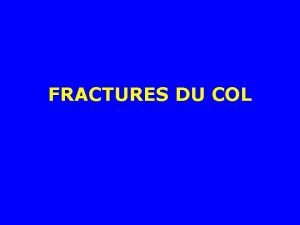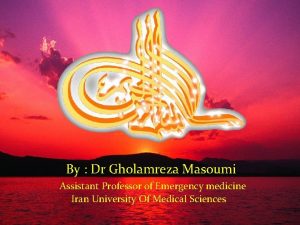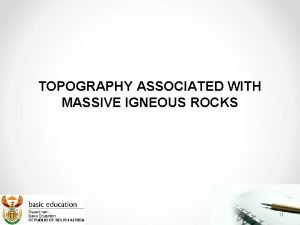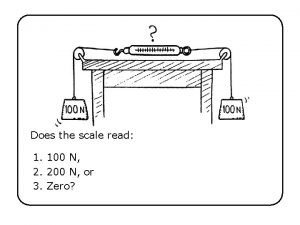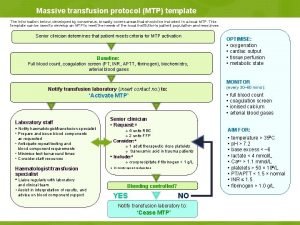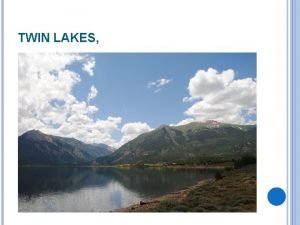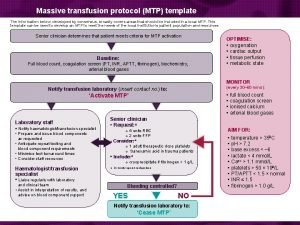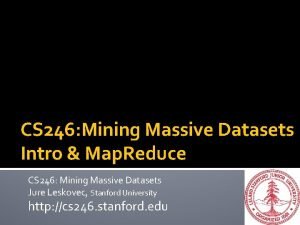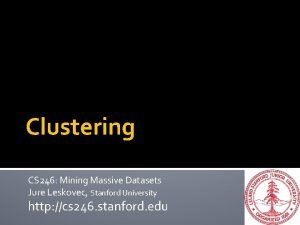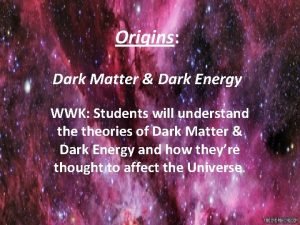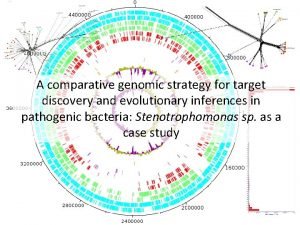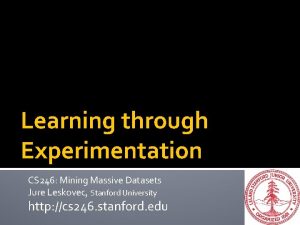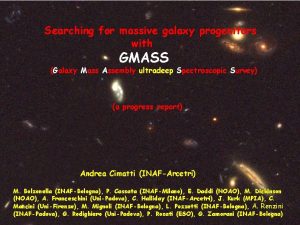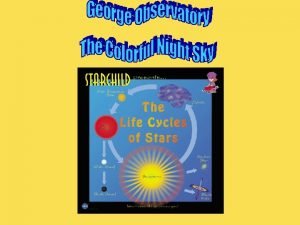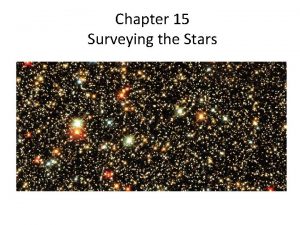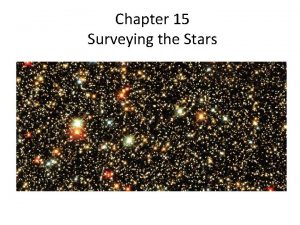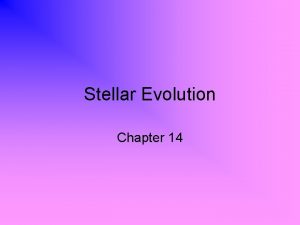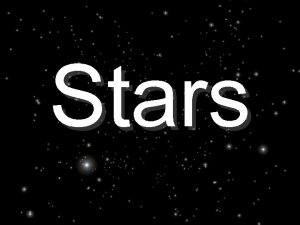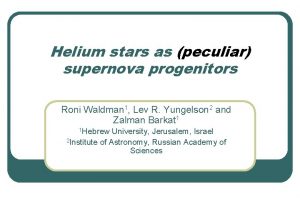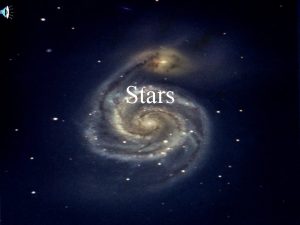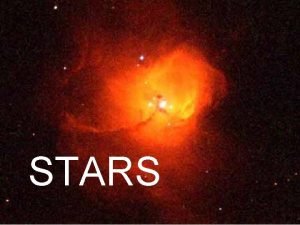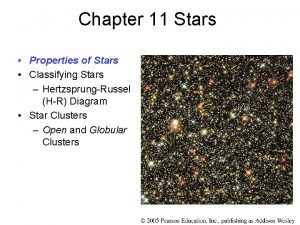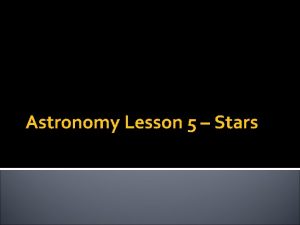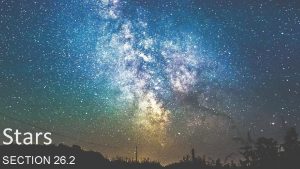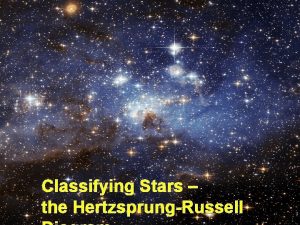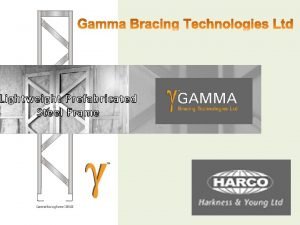Massive Stars as the Progenitors of long Gamma



























- Slides: 27

Massive Stars as the Progenitors of (long) Gamma -Ray Bursts Davide Lazzati (NCSU)

Outline u Prehistory u History u Modern u Future Age

Prehistory • Woosley 1993 “Gamma-Ray Bursts from stellar mass accretion disks around black holes” • Paczynski 1998 “Are Gamma-Ray Bursts in star forming regions? ”

History: Middle Ages • • • Era of indirect evidence Host Galaxies Star forming environments Location of explosion Environment density & density profile Iron lines GRB 980425 - SN 1998 bw

History: Middle Ages � Host Galaxies

History: Middle Ages � Environment density & density profile Panaitescu & Kumar 2001

History: Middle Ages � GRB 98045 - SN 1998 bw Holland et al. 2002

History: Renaissance

History: Renaissance � SN Bumps Bloom et al. 1999

History: Renaissance � GRB 030329 -SN 2003 dh Hjorth et al. 2003 (also Stanek et al. 2003)

History: Renaissance � Mac. Fadyen & Woosley (1999) and Aloy et al. (2000)

Modern Era

Modern Era: setting the stage • • • At least some long-duration GRBs are associated to the explosion of massive compact stars. The two events are coeval to within less than 1 day. If we release relativistic energy in the core of a massive compact star, we can get a relativistic jet outside of it.

Do all long GRBs have SNe? • • Every time we can see one we do see it But we cannot see SNe at z>1, where most GRBs are observed At least two long durations GRBs with no SN, but probably misclassification or evidence that the long-short classification is not physical “No SN” does not necessarily implies “no stellar progenitor” (56 Ni production issue, see next talk by S. Nagataki)

Nature of the central engine • • • Two main candidates: Black Hole Accretion Disk system, Magnetar. All require rotation How to tell? Associated NRO (Non-Relativistic Outflow) and implications on nucleosynthesis (better seen in No. GRB SNe) Evidence of BH-Sne e. g. SN 1979 C, SN 2009 kf Very energetic events Pre-explosion progenitor properties and/or or late-time engine emission

Consequences on the GRB • Morsony et al. 2010 Morsony et al. 2007 Some 1051 erg of the true energy are lost in drilling the star • • Lazzati et al. in prep. Opening angle evolution Variability Increased photospheric emission X-ray flares

How many WR stars/type Ibc SNe produce GRBs? Why some do and some don’t? • • GRBs rate ~1% of type Ibc SNe, 0. 2% of all CCSNe (Podsiadlowski et al. 2004, Soderberg et al. 2010) Special ingredient 1: rotation (for formation of BH) Special ingredient 2: low metallicity (to keep angular momentum) Special ingredient 3: binarity? (Controversial) Best constraints from observations, still too many uncertainties on theoretical side. Most models predict only a few per cent of SNe to be associated to a GRB

Massive stars & BROs = Bipolar Relativistic Outflows Apparently Normal SN Any time E<=1051 erg t<4 s 10% of Ibc? ? ? Successful GRB When engine lasts long enough (t>5 s) ~1% of Ibc 980425 -like Faint GRB When the engine barely makes it to breakout (4. 5<t<5 s) ~1% of Ibc Radio-Bright SN Rates from Podsiadlowski et al. 2004; Guetta & Della Valle 2007; Soderberg et al. 2010 When the engine barely fails to break out (4<t<4. 5 s) ~1% of Ibc

BROs-induced SNe r v

BROs-induced SNe None of 5 simulations succeeded in reproducing SN 2009 bb Einj=1051 erg t=1, 3, 6 s Einj=3 x 1051 erg t=1, 3 s Lazzati et al. in prep.

BROs-induced SNe Producing a 2009 bb -like SN requires fine tuning Models for the origin of BROs predict only a few per cent (<1%) Ibc with BROs All SNe with detectable BRO effects amount to ~3% of Ibc SNe Are BROs SNe relevant cosmologically (e. g. for heavy elements inventory? )

Riddles • • • GRB 060124 Precursors Why are short and long GRBs so similar to each other? Where are the winds?

Conclusions What are the BROs engines, how they come about, how many of them? Better stellar evolution models to explain high incidence of engines in stripped massive stars Better observational features to select BROs SNe Better engine models (especially for the BH-AD case)


History: Middle Ages � Star forming environments Hogg & Fruchter 1999

History: Middle Ages � Iron lines Piro et al. 2000

History: Middle Ages � Location of explosion Bloom et al. 2002
 Small/medium star life cycle
Small/medium star life cycle Mary daniels is a student in england
Mary daniels is a student in england Tall+short h
Tall+short h Once upon a time there was a fox
Once upon a time there was a fox Từ ngữ thể hiện lòng nhân hậu
Từ ngữ thể hiện lòng nhân hậu Hanches creuses femme
Hanches creuses femme Massive hemothorax
Massive hemothorax What are the complications of blood transfusion
What are the complications of blood transfusion What is mooc
What is mooc Massive igneous rock from which tors develop
Massive igneous rock from which tors develop Mining of massive datasets solution
Mining of massive datasets solution A scalable bootstrap for massive data
A scalable bootstrap for massive data Does the scale read 100 n
Does the scale read 100 n Mtp template
Mtp template Traub's area location
Traub's area location Giant wood chipper
Giant wood chipper Endophytes are primary producers that live
Endophytes are primary producers that live Seabed massive sulphides (sms)
Seabed massive sulphides (sms) Mtp template
Mtp template Cs 246: mining massive data sets
Cs 246: mining massive data sets Cs 246 stanford
Cs 246 stanford Nagma vs hagma
Nagma vs hagma Massive compact halo objects
Massive compact halo objects Hémiplégie massive proportionnelle
Hémiplégie massive proportionnelle Massive comparative and superlative
Massive comparative and superlative Massive transformative purpose examples
Massive transformative purpose examples Stanford mining massive datasets
Stanford mining massive datasets Massive hemothorax
Massive hemothorax





